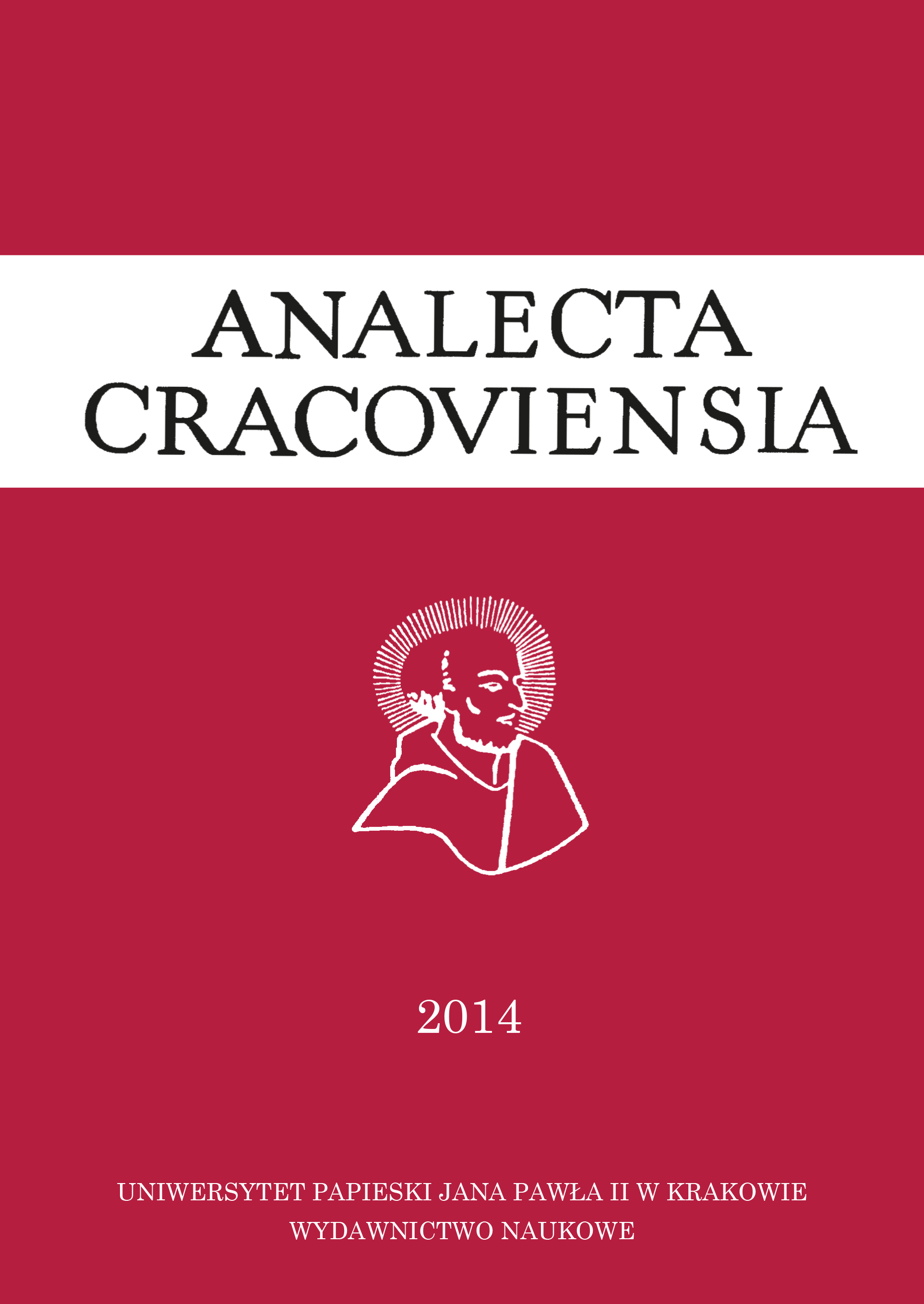The Prayer Book of Nawojka. Study over the source
DOI:
https://doi.org/10.15633/acr.961Keywords:
The Prayer Book of Nawojka, liber precum, religiosity of the Middle AgesAbstract
The aim of this article is to perform a basic research of source, i.e. decision of time, circumstances and place of origin, authorship and milieu in which arose the Prayer Book of Nawojka – one of the oldest monuments of the Polish language. The Prayer Book include prayers addressed to Mary, with motifs of Eucharistic and to different occasions. Sources those prayers may sight in other widespread in the end of fifteenth century libri precum: Hortulus animae and Antidotarius animae. This observation is not permit to associate the Prayer Book with any milieu. Presumptions on this subject presented in historiography are unjustified. On the basis of performed study and Franciszek Krček’s and Aleksander Brückner’s research about textual criticism and analysis made by linguists who dated language of the Prayer Book at the end of fifteenth century, author claimed that the Prayer Book of Nawojka is copy of a older manuscript formed at the end of fifteenth century. The manuscript of the Prayer Book was prepared in the 1st half of the sixteenth century and presumably it was used by nobility. It was drawn by a professional scribe. Probably the Prayer Book of Nawojka or the primary manuscript arose in Lesser Poland. It is estimated as a sophisticated literary.
References
Bernacki L., Pierwsza książka polska. Studium bibliograficzne, Lwów 1918.
Borkowska U., Królewskie modlitewniki. Studium z kultury religijnej epoki Jagiellonów (XV i początek XVI wieku), Lublin 1999.
Brückner A., Literatura religijna w Polsce średniowiecznej, t. 3: Legendy i modlitewniki, Warszawa 1904.
Danysz A., Das Gebetbuch der heiligen Hedwig, „Archiv für slavische Philologie” 5 (1881), s. 402–424.
Krček F., Modlitewnik Nawojki. Studyum językowe, „Rozprawy Akademii Umiejętności. Wydział Filologiczny” seria II, 23 (1894), s. 186–267.
Książeczka do nabożeństwa, na którey się modliła Ś. Jadwiga, z rodu królów polskich, podług pierwszego rękopismu, wraz z załączeniem naśladowania oryginału, wyd. J. Motty, Poznań 1823.Mańkowski L., Zu der Frage nach den Quellen des „Hedwigsbüchleins”, „Archiv für slavische Philologie” 10 (1887), s. 8–26.
Salicetus Nicolaus, Liber meditationum ac orationum deuotarum qui antidotarius animae dicitur, Strassburg 1490 (Johann Grüninger), Universitäts- und Landesbibliothek Düsseldorf, ink. Th. I. 649, za: http://digital.ub.uniduesseldorf.de/ihd/content/pageview/2847354 (31.05.2013).
Szatan P., Modlitewnik Nawojki. Próba rekonstrukcji rękopisu, „Studia Claromontana” 30 (2012), s. 279–304.
Zawitkowska W., Modlitewnik Nawojki (Kilka uwag o cennym zabytku piśmiennictwa polskiego i jego autorce. Na marginesie badań nad dziejami rodziny Koniecpolskich w wiekach średnich), „Kresy Południowo-Wschodnie. Rocznik Regionalnego Ośrodka Kultury, Edukacji i Oświaty w Przemyślu” 1 (2003) z. 1, s. 19–30.
Downloads
Published
Issue
Section
License
Copyright (c) 2015 Patryk Szatan

This work is licensed under a Creative Commons Attribution-NonCommercial-NoDerivatives 3.0 Unported License.
Authors who publish with this journal agree to the following terms:
- Authors retain the copyright and full publishing rights without restrictions, and grant the journal right of first publication with the work simultaneously licensed under a Creative Commons Attribution 4.0 International License that allows others to share the work with an acknowledgement of the work's authorship and initial publication in this journal.
- Authors are able to enter into separate, additional contractual arrangements for the non-exclusive distribution of the journal's published version of the work (e.g., post it to an institutional repository or publish it in a book), with an acknowledgement of its initial publication in this journal.
- Authors are permitted and encouraged to post their work online (e.g., in institutional repositories or on their website) prior to and during the submission process, as it can lead to productive exchanges, as well as earlier and greater citation of published work (See The Effect of Open Access).

